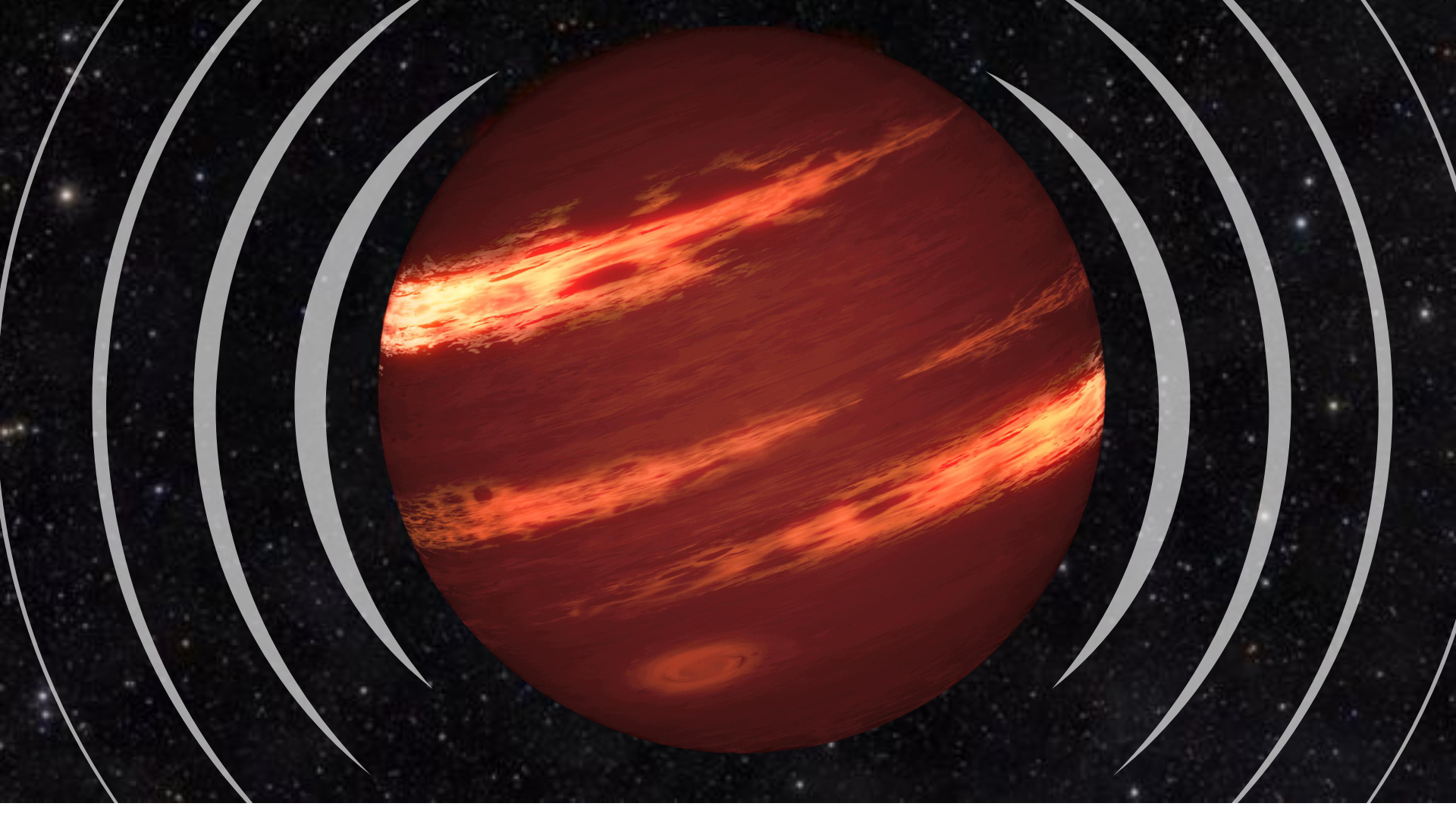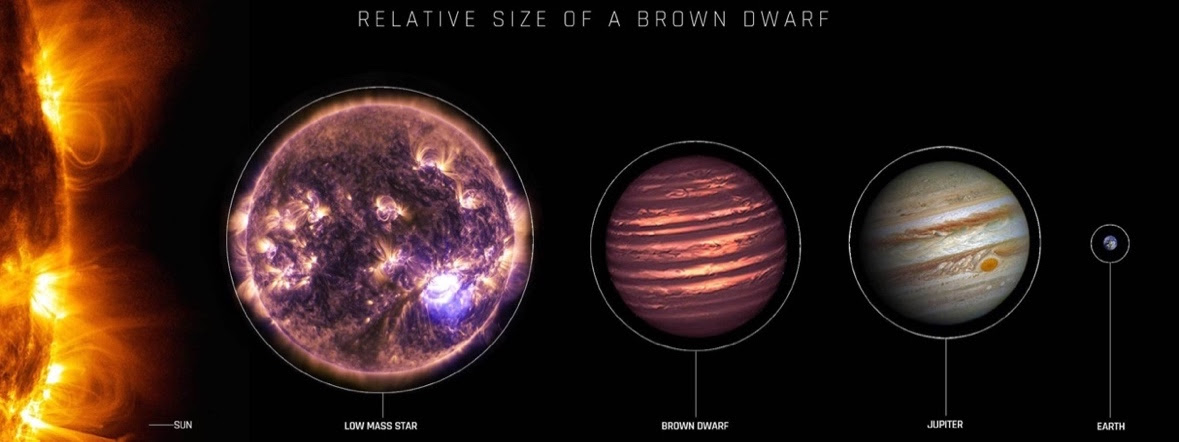'Failed star' is the coldest radio wave source ever discovered
A brown dwarf no warmer than a campfire and smaller than Jupiter is the coldest star ever found emitting radio waves.

Astronomers have spotted the coldest star-like body on record found to produce emissions at radio wavelengths.
Cooler than a campfire here on Earth and smaller than Jupiter, the faint object called T8 Dwarf WISE J062309.94−045624.6 is an ultra-cool brown dwarf, often referred to as "failed stars" because, despite usually being larger than gas giants, they are still smaller than stars.
With a temperature of just around 800 degrees Fahrenheit (425 degrees Celsius), the brown dwarf is a cool customer in comparison to the sun, which has a temperature of around 10,000 degrees Fahrenheit (5,500 degrees Celsius). Yet, it isn't the coolest brown dwarf ever discovered; examples of these "failed stars" have been found with temperatures as low as 10 degrees Fahrenheit (minus 23 degrees Celsius), but these ultracold brown dwarfs weren't blasting out radio waves.
"It's very rare to find ultracool brown dwarf stars like this producing radio emission. That's because their dynamics do not usually produce the magnetic fields that generate radio emissions detectable from Earth," University of Sydney School of Physics Ph.D student Kovi Rose said in a statement. "Finding this brown dwarf producing radio waves at such a low temperature is a neat discovery."
Related: Brown Dwarfs: Failed Stars Resembling Planets
Brown dwarfs lack the mass needed to trigger the nuclear fusion of hydrogen to helium at their cores, the process that defines main-sequence stars. That's why the study of these smoldering balls of gas is important, as it could help scientists better determine where the dividing line between gas giant planets and stars truly lies.
T8 Dwarf WISE J062309.94−045624.6 was first spotted by California Institute of Technology (Caltech) scientists in 2011 using the Wide-field Infrared Survey Explorer (WISE). The brown dwarf is located around 37 light-years from Earth, and it has a width that is between 65% and 95% that of Jupiter, the largest planet in the solar system. The failed star is much more massive than the gas giant planet, however, with anywhere from between 4 and 44 times the mass of Jupiter.
Get the Space.com Newsletter
Breaking space news, the latest updates on rocket launches, skywatching events and more!
Related: Brown Dwarfs: The Coolest Stars or the Hottest Planets?
An old-fashioned radio mystery
Scientists have a good understanding of how main-sequence hydrogen-burning stars like the sun generate magnetic fields and radio waves. It isn't as well understood how the internal dynamics of brown dwarfs like T8 Dwarf WISE J062309.94−045624.6 generate radio waves. This mystery is compounded by the fact that only 10% of the known population of these failed stars produce radio emissions.
Researchers suspect that it could be the rapid rotation of some ultracool brown dwarfs that help them generate strong magnetic fields, and when these fields spin at a different rate than the ionized atmosphere of brown dwarfs, this creates an electric current.

In the case of T8 Dwarf WISE J062309.94−045624.6, the radio waves may be created when electrons flow to the magnetic poles of the failed star and give rise to regular bursts of radio waves. Further study of this cool failed star could help finally solve this puzzle.
"Deepening our knowledge of ultracool brown dwarfs like this one will help us understand the evolution of stars, including how they generate magnetic fields," Rose concluded.
The analysis of T8 Dwarf WISE J062309.94−045624.6 that revealed its radio emissions was conducted by the CSIRO ASKAP telescope in Western Australia. This was then confirmed with follow-up investigations by the Australia Telescope Compact Array and the MeerKAT telescope located in South Africa.
"We've just started full operations with ASKAP, and we're already finding a lot of interesting and unusual astronomical objects like this," head of the University of Sydney School of Physics and research co-author Tara Murphy said. "As we open this window on the radio sky, we will improve our understanding of the stars around us and the potential habitability of exoplanet systems they host."
The team's research was published July 14 in the The Astrophysical Journal.
Join our Space Forums to keep talking space on the latest missions, night sky and more! And if you have a news tip, correction or comment, let us know at: community@space.com.

Robert Lea is a science journalist in the U.K. whose articles have been published in Physics World, New Scientist, Astronomy Magazine, All About Space, Newsweek and ZME Science. He also writes about science communication for Elsevier and the European Journal of Physics. Rob holds a bachelor of science degree in physics and astronomy from the U.K.’s Open University. Follow him on Twitter @sciencef1rst.









